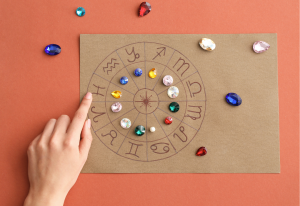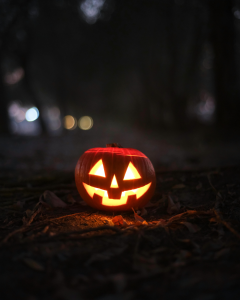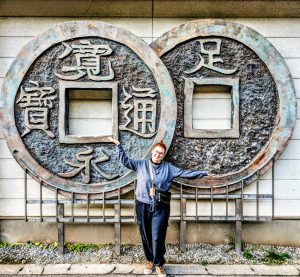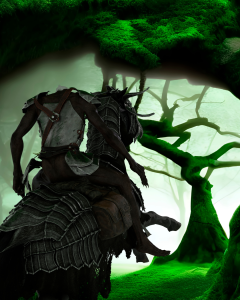
The History of Birthstones: A Journey Through Time and Lore
Birthstones feel like one of those things that have always existed — shiny gems tied to the month of our birthday. But the truth is
There’s more to pumpkins than lattes and doorstep grins so I thought I’d share some tales about these talismans of harvest, hearth and Halloween.
There’s something about a pumpkin. Not the supermarket kind but the wild ones. Misshapen and stalks curling like claws. Skins flecked with spots, dimples, and soot. The ones that look a little bit naughty!


They bloom as summer dies. Brought in with the harvest, their flesh is thick, their roots deep, and their story? Older than carved lanterns and pumpkin spice combined.
The story of the pumpkin begins not in the fields of modern farms, but way back in ancient times.
Over 7,500 years ago, the first pumpkins were cultivated by the Indigenous peoples of Central and South America. These weren’t the round gourds we know today — they were bitter and hard-shelled. They were a survival food but also a sacred one. Pumpkins were part of the “Three Sisters” — a trio of crops (corn, beans, squash) grown together in perfect balance.
In this early role, pumpkins were vessels — of nourishment, tradition, and the turning wheel of seasons. Their seeds were offerings, and their shells were hollowed into bowls, containers, and sometimes even masks.
The pumpkin’s place in the world of folklore was sealed with the tale of Stingy Jack — an Irish rogue who tricked the Devil not once but twice. Upon his death, he wasn’t allowed into Heaven and even Hell sent him away with only a burning coal to light his way. Jack carved a lantern from a turnip and wandered forever between the worlds.

Irish immigrants brought this tale with them when they came to North America but swapped the turnip for something grander. The native pumpkin became the perfect vessel for this spooky ghost light.
From this tale, the jack-o’-lantern was born and became not just a festive decoration, but a protective object. They were set on porches and windowsills to guide spirits, scare off evil and mark the thinning veil of the season.
There’s always been something alchemical about pumpkins. They’re both earthly and otherworldly. Harvested from the dirt, a symbol of plenty, but also of passing — ripeness turning to rot. Transformation is their essence. And in that, they share something with metalwork.

That’s one of the reasons I make them. My copper necklaces and earrings are born from fire, just like the Stingy Jack legend.
Shaped, textured, and kiln fired each one is slightly different. Like real pumpkins: no two are the same. No perfection. Just pure seasonal spirit.
They’re more than just autumn accessories — they’re talismans with a nod to harvest magic. A piece of the Spooky Season you can carry with you, long after the magical lanterns are gone.
Pumpkins magic comes from its duality. It holds seeds that have the potential of new life and yet they are often carved into a hollow deathly grin and emptied out to hold a candle.
In folklore and spiritual traditions, pumpkins represent protection, abundance, transformation, and the unknown. They’re a reminder of the cycles of life and death, growth to decay, and back again. They arrive as the year begins to darken, when nights grow long and the boundary between worlds wears thin.
To wear one of my tiny copper necklaces means you carry a piece of that with you.

Today, pumpkins are everywhere. They’ve been commodified and glittered and placed into coffee cups. And while there’s nothing wrong with loving a PSL, there’s something far older hiding beneath it all.
The real pumpkin is a symbol of mystery, mischief, and magic. It reminds us to honour what the earth gives.
So whether you’re carving one by candlelight or wearing one close to your heart, remember: pumpkins aren’t just for autumn. They’re for anyone who knows that beauty can come from decay, that light is fiercest in the dark.
Not a diamond shaped like a pumpkin but a gorgeous “fancy vivid orange, naturally coloured diamond” which was auctioned at Sotheby’s on Halloween in 1997. Bought by Ronald Winston (of Harry Winston jeweller fame) for just over $1.3 million, it is a cushion cut gem weighing 5.54 carats. This diamond was appropriately named for its vibrant colour, shape, and serendipitous sale date.
While small compared to other famous diamonds like the Hope or Koh-i-Noor, the Gemmological Institute of America (GIA) declared, “The Pumpkin Diamond is one of the largest fancy vivid orange, naturally coloured diamonds in the world.”

It was originally discovered in the Central African Republic in 1997 as an 11-carat rough diamond and to the untrained eye it would have appeared to be just a brownish-orange stone.
Pure orange diamonds are considered some of the rarest gems, alongside red, pink, and blue diamonds. The GIA rarely grants an orange diamond a pure colour grade and pure orange specimens exceptionally hard to find.
Gemmologists believe nitrogen or hydrogen in the stone produces the elusive orange hue, though its origins remain an mystery.
Made into a classic three-stone ring setting, flanked by two smaller, crescent-shaped white diamonds, the finished ring was valued at over $3 million. It captured global attention in 2002 when Halle Berry wore it to the 74th Academy Awards when she became the first Black woman to win Best Actress.
In 2003, the Pumpkin was removed from the ring setting and exhibited at the Smithsonian’s ‘The Splendor of Diamonds’ exhibit that showcased seven of the world’s most rare and valuable-coloured diamonds.
The whereabouts of the pumpkin diamond are currently unknown. I wish I knew where it was!
I can’t provide a pumpkin diamond but I can let you explore my Copper Pumpkin Collection — handmade talismans for lovers of folklore, twilight, and the sacred turning of the seasons.
Or join the Rock & Rose mailing list for behind-the-scenes glimpses from the bench, and first dibs on limited seasonal drops.

Author

Birthstones feel like one of those things that have always existed — shiny gems tied to the month of our birthday. But the truth is

What happens when a jeweller visits a spooky copper mine in Japan? Cool tunnels, weird mannequins, and a new love for metal.

A blog about ghost stories, haunted places & my new ghost pendant. Explore spooky legends, eerie history & tales of the unexplained.

Discover how and why oxidised copper plays a central role in my jewellery making—bringing texture, contrast, and quiet character to every piece.

